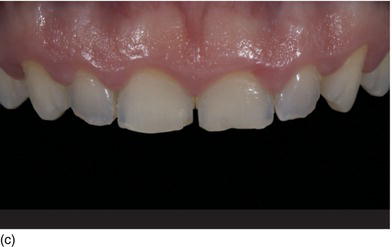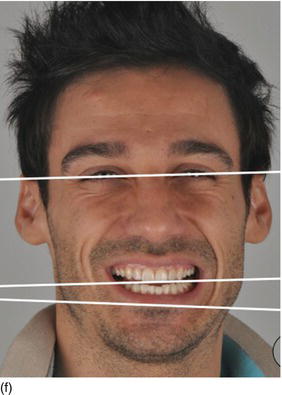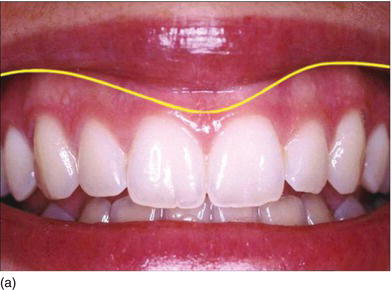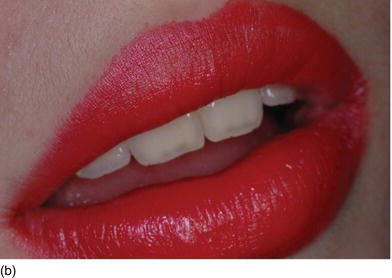3
The esthetics of the face
Successful smile enhancement must begin with a facial analysis “from the outside in.” An esthetically pleasing smile depends on several parameters.
The face
The face has an important influence on the perception of the esthetic quality of the smile. Several psychological studies have tested the hypothesis that the assessment of attractiveness is sensitive to facial symmetry (Thornhill and Gangestad, 1999). There is a significant difference between attractiveness and symmetry, and these parameters are not strongly related in the faces of women or men. The natural subtle asymmetry might be relatively unimportant in judging facial attractiveness (Zaidel et al., 2005). Totally symmetrical faces, at least when created photographically, at times appear alien or emotionally detached because of the reduction of natural subtle asymmetry, which perhaps makes such faces appear passive and inert. Left–right facial asymmetries are discernible in beautiful models (Fig 3.1a); therefore very beautiful faces can be functionally asymmetrical (Zaidel and Cohen, 2005).
The perception of symmetry in the smile cannot be dissociated from the sagittal median line of the whole face. Focusing only on the buccal region, the symmetry of the smile depends on the midline between the maxillary incisors. By rotating one of these incisors, a visual constraint is introduced which upsets the relative symmetry of the tooth display. The asymmetry that this creates breaks the repetitious monotony of geometrical forms. Asymmetry in the tooth display or in a smiling face is not necessarily perceived as esthetically displeasing. It must be imperceptible at first glance, however, or it will produce a visual tension as the eyes are drawn more to one side of the face than to the other (Zlowodzki et al., 2008).
The health and appearance of the soft tissue around the teeth are essential components of a seductive smile (Liebart et al., 2011) (Figs 3.1b–f). Thus, a gummy smile may be accompanied by facial disruptions in which the lower half of the face appears to be disproportionately long, causing imbalance (Rees and La Trenta, 1989). More complex anatomical disorders can sometimes be added to morphological disruptions: Class II malocclusion, a receding chin, nasal protrusion, dentoalveolar extrusion, and maxillary endognathic deformity that warrants orthognatic surgical therapy (Ezquerra et al., 1999).
The lips
In modern-day society, offering a beautiful smile means showing fully designed lips, healthy, well-aligned dentition, and a harmonious gingival contour.
The anterior esthetic zone has been defined as the area encompassed by the perimeter of the lips. The smile is a dynamic position of the lips and it varies according to the degree of contraction of the muscles, and according to the lip profile. The size of the smile varies as a function of each individual situation (Liebart et al., 2011).
Figure 3.1 (a) A young model with a beautiful, seemingly symmetrical, face. (b) On a forced smile, the patient has an asymmetry of the lower lips, with worn maxillary and/or mandibular teeth. (c) The maxillary teeth present significant abrasion of the incisal edge because of bruxomania. (d) Laminate veneers a few weeks after cementation, with a harmonious tooth and gingival contour. (e) The new and improved smile creates a more positive attitude in the patient. (f) On an exaggerated smile, a lower left lip asymmetry still exists, as initially. (Figures (b) to (f) courtesy of Dr. S. Koubi, Marseille, France.)






Figure 3.2 (a) In this photograph, the added line representsthe imaginary upper lip line. (b) Lips during speech, showing the incisal third of the anterior maxillary teeth. (c) A forced smile, showing the gingiva on the lateral posterior areas.


Stay updated, free dental videos. Join our Telegram channel

VIDEdental - Online dental courses


